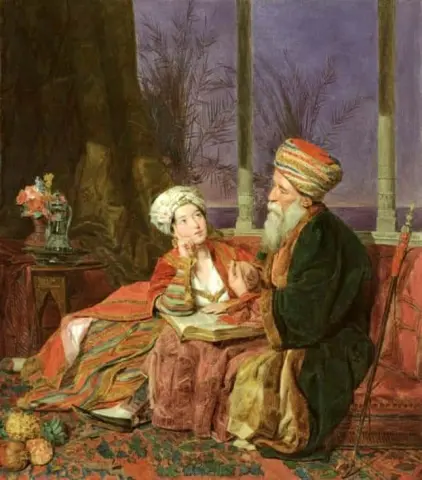

Hand painted reproductions of Ferdinand Georg Waldmüller
Ferdinand Georg Waldmüller: A Master of Austrian Realism and Romanticism
Early Life and Artistic Development
Ferdinand Georg Waldmüller (1793–1865) was one of the most influential Austrian painters of the 19th century, known for his meticulous attention to detail and his ability to capture the subtleties of everyday life. Born in Vienna, Waldmüller showed an early aptitude for drawing and enrolled at the Academy of Fine Arts in Vienna at the age of 16. His early education exposed him to both classical techniques and the growing Romantic ideals that were sweeping through Europe.
During his time at the Academy, Waldmüller honed his skills in portraiture, genre scenes, and landscapes, developing a keen eye for realism and a deep appreciation for natural light. He became known for his expressive portrayals of the human figure, as well as his vivid depictions of rural Austrian life. As he grew older, Waldmüller moved away from the academic style that was prevalent in Vienna at the time, adopting a more personal and emotionally charged approach to painting.
Style and Influence
Waldmüller’s artistic style is a blend of Realism and Romanticism, characterized by a remarkable attention to detail and an intense connection to nature. His works often depict everyday scenes, with an emphasis on the lives of ordinary people, including rural laborers, children, and family interactions. Waldmüller’s landscapes are particularly celebrated for their rich depiction of the natural world, often featuring lush forests, sweeping hills, and tranquil lakes bathed in soft, natural light.
What sets Waldmüller apart from other artists of his time is his ability to convey a profound sense of humanity in his portraits and genre scenes. His works are often imbued with a quiet introspection, capturing moments of human emotion and the nuances of personal relationships. His intimate portrayal of figures, whether in the context of a rural Austrian landscape or in the home, has earned him recognition as one of the finest portraitists of the 19th century.
Waldmüller’s use of light was groundbreaking for his time. He was a master at rendering the effects of natural light on the human form and the landscape, lending a sense of immediacy and realism to his work. His approach to color and composition allowed him to create harmonious, lifelike images that seemed to come alive with energy and vitality. His influence extended well beyond Austria, inspiring generations of artists across Europe.
Legacy and Enduring Influence
Ferdinand Georg Waldmüller’s legacy as a pioneer of Austrian Realism is firmly established. He played a crucial role in the transition from the Romantic movement to a more focused, realistic approach to painting. His emphasis on depicting everyday life with sincerity and clarity was revolutionary for its time, and his works continue to be celebrated for their emotional depth and technical brilliance.
Today, Waldmüller’s paintings are regarded as iconic examples of 19th-century Austrian art, and his influence can be seen in the works of later artists who sought to explore the human condition through the lens of realism. His contributions to portraiture and landscape painting have left an indelible mark on the art world, ensuring his place as one of the great masters of Austrian painting.
Acquire Handcrafted Reproductions of Ferdinand Georg Waldmüller’s Art
Experience the warmth and realism of Ferdinand Georg Waldmüller’s masterpieces with our handcrafted oil painting reproductions on canvas. Each piece captures the artist's extraordinary ability to render the beauty of human life and the natural world, bringing the timeless elegance of Waldmüller’s work into your home. Explore our collection and own a piece of Austrian art history today.
Imagine owning an original-style painting by one of the greatest artists in history. At POD, we offer you the chance to make this dream a reality. Each canvas is faithfully reproduced down to the smallest detail, allowing you to experience the beauty of the artist’s vision in your own home.
Our reproductions are crafted by experienced painters using the finest materials and time-honored methods. We are committed to delivering works of exceptional quality that will inspire and bring joy to your family for generations to come.








































